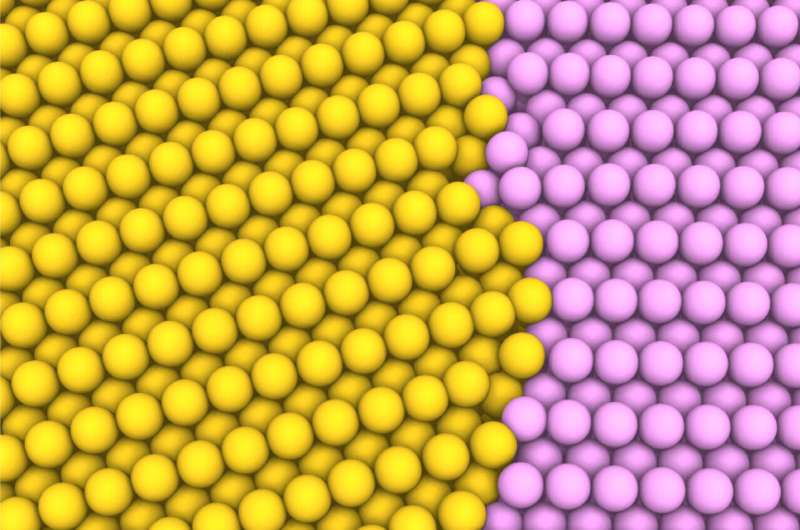March 21, 2022 report
Using electron microscopy and automatic atom-tracking to learn more about grain boundaries in metals during deformation

A team of researchers affiliated with multiple institutions in China and the U.S. has found that it is possible to track the sliding of grain boundaries in some metals at the atomic scale using an electron microscope and an automatic atom tracker. In their paper published in the journal Science, the group describes their study of platinum using their new technique and the discovery they made in doing so.
Scientists have been studying the properties of metals for many years. Learning more about how crystal grains in certain metals interact with one another has led to the development of new kinds of metals and applications for their use. In their recent effort, the researchers took a novel approach to studying the sliding that occurs between grains and in so doing have learned something new.
When crystalline metals are deformed, the grains that they are made of move against one another, and the way they move determines many of their properties, such as malleability. To learn more about what happens between grains in such metals during deformity, the researchers used two types of technologies: transmission electron microscopy and automated atom-tracking.
Transmission electron microscopy involves firing electrons at a target and analyzing the shapes that are formed as they pass through. And automatic atom trackers are software routines designed to study multiple images and to follow the movement of objects such as atoms. By combining these technologies, the researchers were able to take multiple images of platinum grains and follow the action of the atoms at their edges as the grains interacted with one another during deformation. They were able to watch the sliding that occurred between the grains, but they also found something new: Sometimes during the sliding, one or more atoms would jump from one grain to another, and as they did so, the boundaries between them would change to accommodate the change in location of the atoms that had moved.
The researchers suggest their technique, in addition to revealing a previously unknown mode of grain coupling, increases the understanding of atomic scale processes in certain polycrystalline materials.
More information: Lihua Wang et al, Tracking the sliding of grain boundaries at the atomic scale, Science (2022). DOI: 10.1126/science.abm2612
Journal information: Science
© 2022 Science X Network




















